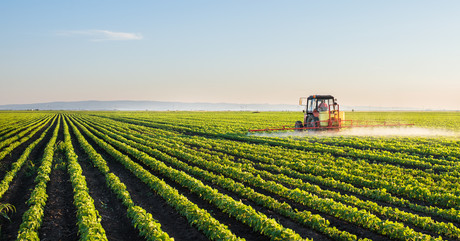Is technology growing too fast for the agriculture industry?

The rapid development of emerging technologies in the agricultural industry has created a need to better understand consumer perceptions and address regulatory challenges, according to two AgriFutures reports.
‘Emerging technologies in agriculture: Consumer perceptions around emerging agtech’ by GHD and AgThentic and ‘Emerging technologies in agriculture: Regulatory and other challenges’ by ACIL Allen Consulting deliver insights for government, industry and rural research and development corporations around the changes needed to safeguard the agricultural industry’s use of new technologies and the opportunity cost of getting it wrong.
According to the first report, the adoption of emerging technologies in Australian agriculture is expanding faster than the consumer’s capacity to understand the opportunities.
It highlighted the impact that consumer perceptions can have on the adoption of agricultural technology throughout the value and supply chain, and the need for agricultural producers to maintain a ‘social licence’ from consumers to remain competitive in the global marketplace.
For example, a farm investing $100,000 per annum on insecticides, herbicides and fertilisers could use robots to reduce these costs by up to 40% due to the bots’ ability to spread chemicals in precise locations and in optimum volumes. However, ACIL Allen’s research reveals farmers need guidance to help demystify common concerns about robotics, such as insurance, ethics, standards, and data ownership and protection.
Research conducted by GHD and AgThentic revealed there are similar barriers to adoption for blockchain. It found primary producers are confused and sceptical about blockchain as it is often associated with cryptocurrencies.
Understanding, identifying and mitigating perception issues is critical to ensuring farmers continue to adopt beneficial technologies, while consumers have confidence and trust in the way their food and fibre goods are produced.
“The extent to which Australia’s profitability and production efficiency can improve in the next decade depends largely on the success of national efforts to reduce the ambiguity surrounding emerging agricultural technologies, and to constructively engage with consumers to identify possible concerns and overcome bottlenecks to adoption,” GHD and AgThentic's report said.
Policy and regulation have also struggled to keep pace with the rapid advancements in some technologies. AgriFutures Australia Managing Director John Harvey said Australian agriculture needs to stay ahead of the curve when it comes to understanding the potential regulatory impact of technologies, warning that we should not become complacent about our access to technology.
“These reports offer clear actions to help industry and government understand what needs to be done to support agtech adoption on our farms,” he said. “If we don’t address these actions, the sector may be locked out of emerging technologies or be unable to capitalise on opportunities that our international competitors have access to. The reports are instrumental in identifying what the challenges and impediments are and provide practical solutions in areas that will have the greatest impact.”
The reports are funded by the AgriFutures National Rural Issues Program.
Call for comment on endo-1,4-beta-xylanase as a processing aid
Food Standards Australia New Zealand (FSANZ) is calling for comment on an application to permit...
UV light technology to curb viral transmission in poultry environments
Widespread bird flu outbreaks underscore the urgent need for disinfection solutions to curb viral...
Aussie Barramundi farm achieves certification for responsible aquaculture
Northern Territory's Humpty Doo Barramundi is claimed to be the first Australian Barramundi...











